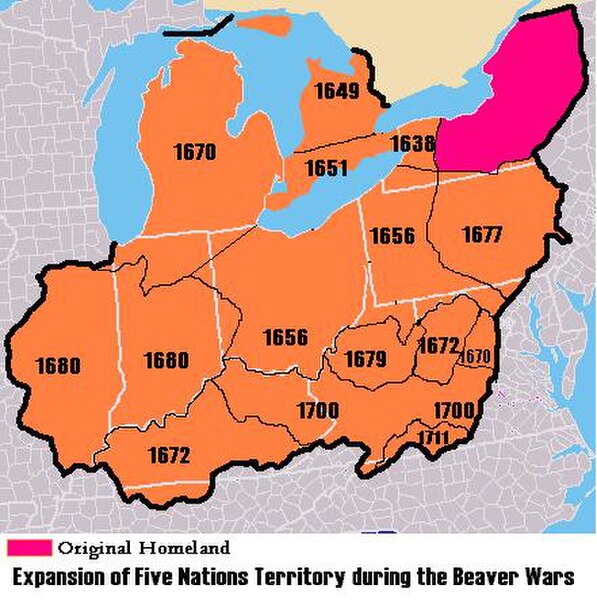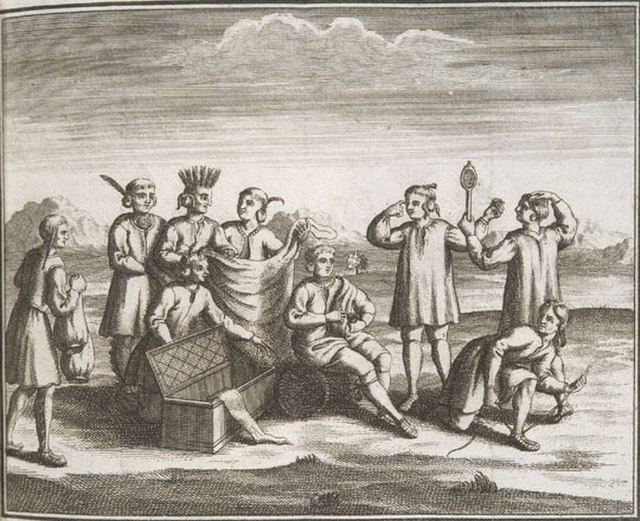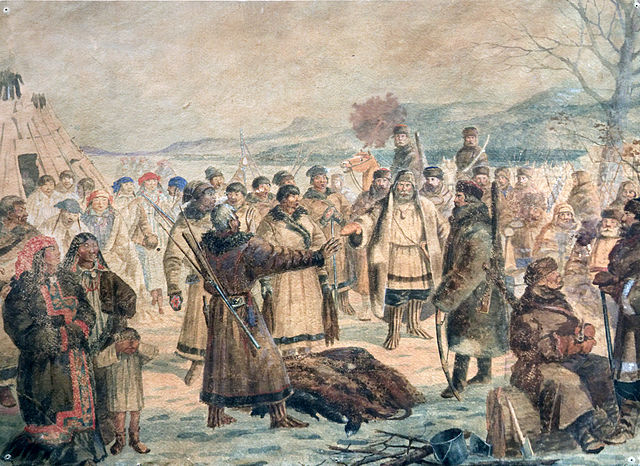The North American fur trade is the (typically) historical commercial trade of furs and other goods in North America, predominantly in the eastern provinces of Canada and the northeastern American colonies. The trade was initiated mainly through French, Dutch and English settlers and explorers in collaboration with various First Nations tribes of the region, such as the Wyandot-Huron and the Iroquois; ultimately, the fur trade's financial and cultural benefits would see the operation quickly expanding coast-to-coast and into more of the continental United States and Alaska.
An illustration of European and Indigenous fur traders in North America, 1777
Fur cleaning tools
Iroquois conquests during the Beaver Wars (mid-1600s), which largely depopulated the upper and mid-Ohio River valley.
Iroquois, with western goods 1722
The fur trade is a worldwide industry dealing in the acquisition and sale of animal fur. Since the establishment of a world fur market in the early modern period, furs of boreal, polar and cold temperate mammalian animals have been the most valued. Historically the trade stimulated the exploration and colonization of Siberia, northern North America, and the South Shetland and South Sandwich Islands.
A fur trader in Fort Chipewyan, Northwest Territories in the 1890s
A fur shop in Tallinn, Estonia in 2019
Fur muff manufacturer's 1949 advertisement
Cossacks collecting yasak in Siberia








